Combat Archer Is A Final Crucible For Deploying U.S. Fighter Squadrons
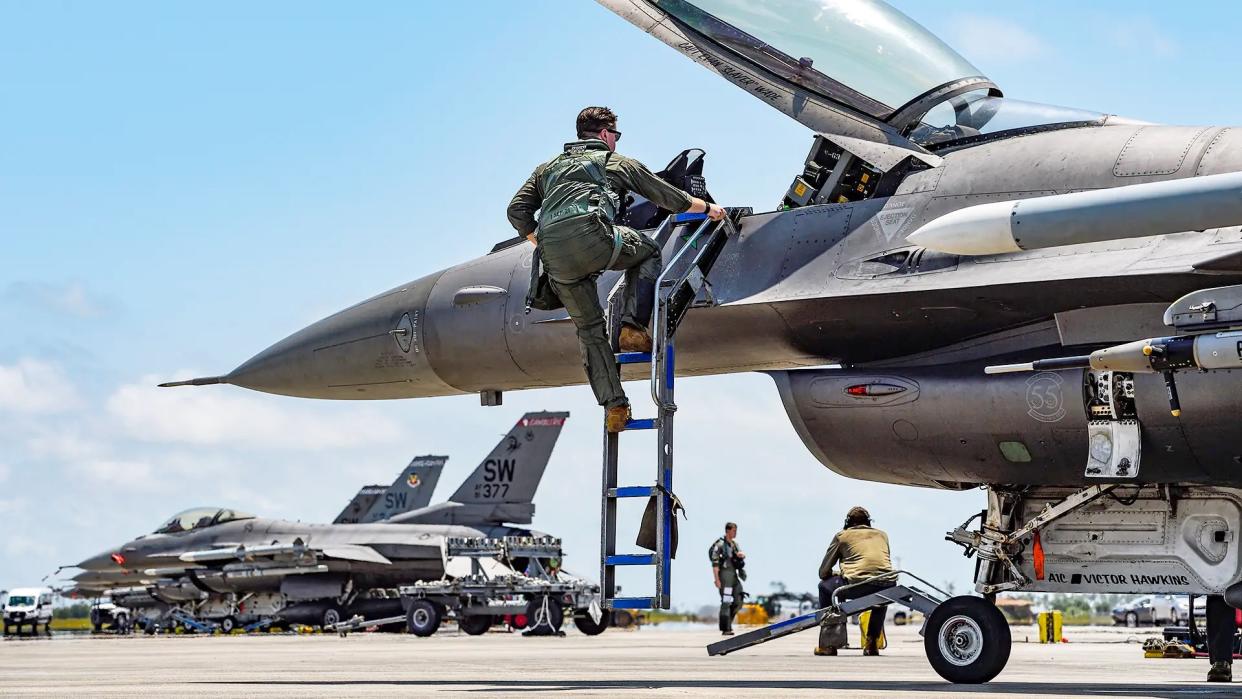
The huge flight line at Tyndall Air Force Base is a hive of activity, with rows of fighter jets lined up under the rising Florida sun, heralding the start of the day’s Combat Archer activities. First light sees ground teams receive live AIM-9M and AIM-9X Sidewinder heat-seeking short-range missiles, as well as AIM-120 Advanced Medium-Range Air-to-Air Missiles (AMRAAMs) from the resident munitions squadron, which had already built and prepped the weapons for loading onto the jets for the day’s missions.

Editor's Note: Welcome to day three of WSEP Week at The War Zone. Each day this week we have a major feature on the Pentagon's biggest air-to-air live fire exercise that works to ensure the weapons, tactics, and people that give it an edge over its adversaries will all work as they are supposed to in a real fight.
F-15C Eagles from the California Air National Guard, F-16Cs from the 20th Fighter Wing at Shaw Air Force Base in South Carolina and from the Air Force Reserve Command’s “Makos” at Homestead in Florida, F-35As from the 388th Fighter Wing in Utah, and U.S. Marine Corps F/A-18 Hornets from the “Sharpshooters” training squadron at Marine Corps Air Station Miramar in California have all come to Florida with one primary aim. To fire live missiles at drone targets.
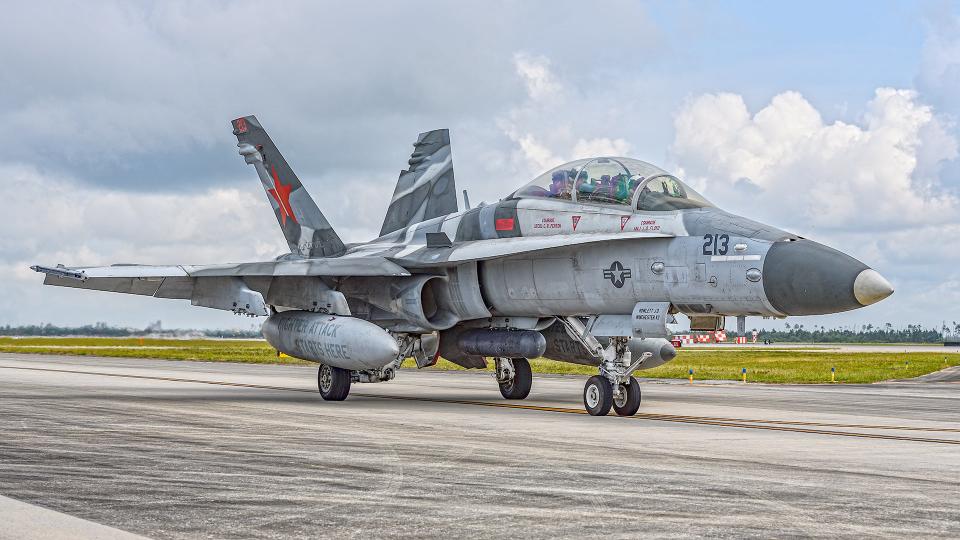
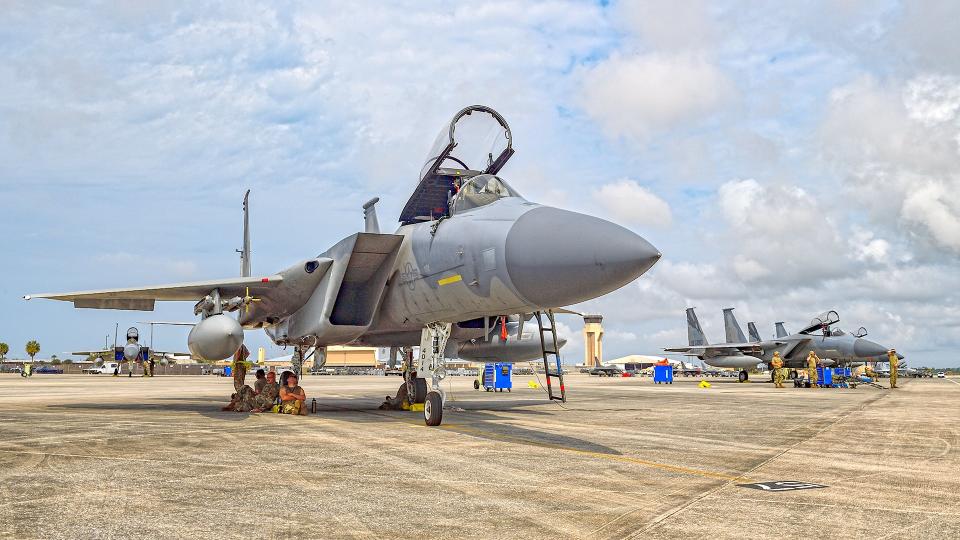
Test and evaluation operations out of locations such as Edwards Air Force Base in California use the ranges over the Pacific to test new weapons and new fighter and bomber capabilities in live-fire tests. The Air Force also executes some live missile shots out of Hill AFB in Utah and over White Sands in New Mexico. Meanwhile, the U.S. Navy still regularly fires heat-seeking missiles at LUU-2 parachute flare targets from locations such as its base at Key West. However, Tyndall is the primary location in the United States where fighter units regularly deploy in order to fire live missiles against realistic drone targets.
In May 2023, the 53rd Weapons Evaluation Group (WEG) hosted the latest iteration of its air-to-air Weapons System Evaluation Program (WSEP), more commonly known as Combat Archer, at the Florida airbase. The scale of the participation, with at least six jets from each unit, meant that the Air Force also laid on a Checkered Flag Large Force Exercise (LFE) to complement the missile firing.
Each day, the visiting squadrons launched live missiles on Combat Archer in the morning, then flew a huge defensive counter-air large force mission (without using live weapons) in the afternoon.
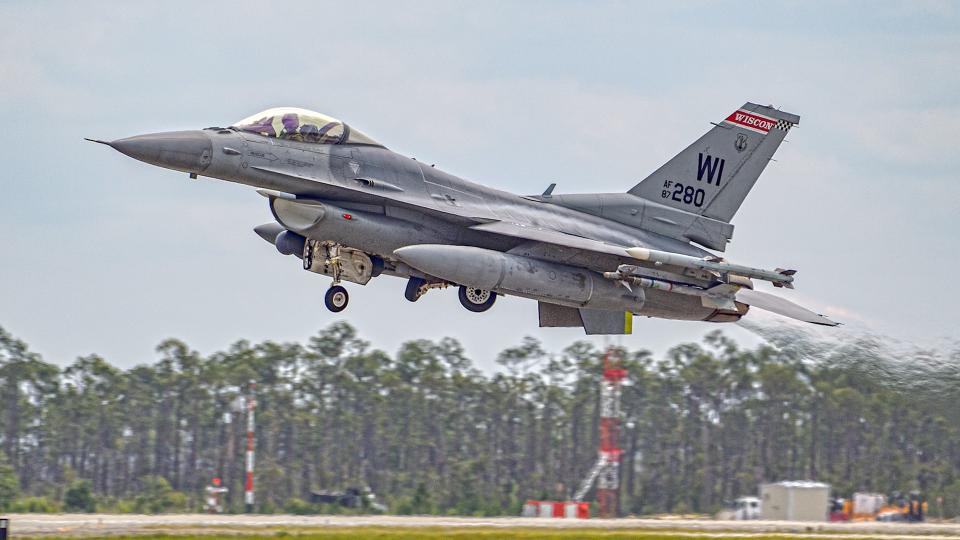
“We come to WSEP to test missiles. We fly out over the Gulf of Mexico to shoot missiles and provide valuable data to the engineers out here. They then pass that data out to the Combat Air Forces [CAF] so that we can employ the best way we can,” Capt. “Judge” Sturniolo, an F-35A pilot assigned to the 4th Fighter Squadron “Fightin’ Fuujins” told The War Zone. “We are also here for Checkered Flag, which is a massive air-to-air LFE, so we all get together to practice in a combat-realistic environment training to a near-peer adversary and figuring out how we best work together, testing contracts that we have built and learning from there.”
Twice a year Combat Archer coincides with Checkered Flag, which is hosted by Tyndall’s resident 325th Fighter Wing. This year, iteration 23-2 of Checkered Flag and 23.08 of WSEP came together from May 8-19, with more than 50 jets participating.
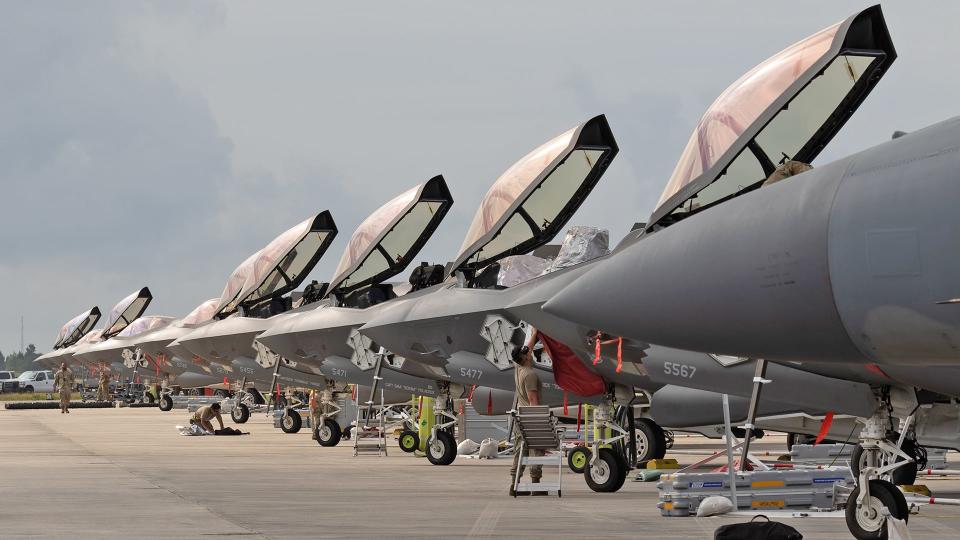
“One of the cool things about WSEP is getting to shoot a live multi-million-dollar missile in the real world,” Sturniolo adds. “It’s a very rare opportunity but we try to get as many people as we can to have that opportunity. We train for it in the simulator all the time and we train to it airborne, but it’s all with simulated weapons. So, getting the opportunity to come down here at an unfamiliar airfield and then shooting a real weapon, to see what it feels like, getting the adrenaline rush, is going to help prepare for combat.”
“Combat Archer really has two main elements,” explains Maj. “Arson” (full name withheld on request) who is the Director of Operations at the 83rd Fighter Weapons Squadron, the unit in the 53rd WEG that oversees the exercise. “We evaluate the visiting units and we evaluate the weapons.”
“A few months before a squadron deploys on combat operations, they come here for their final evaluation after months of spin-up training. They will likely have attended a Red Flag exercise or similar, but we are the final element to evaluate them employing live weapons — that’s AIM-9 Sidewinder, AIM-120 AMRAAM, and the gun. That’s from munitions delivery out to the flight line where we evaluate their weapons troops loading the missiles, the pilots flying the airplanes, and employing the weapons.”
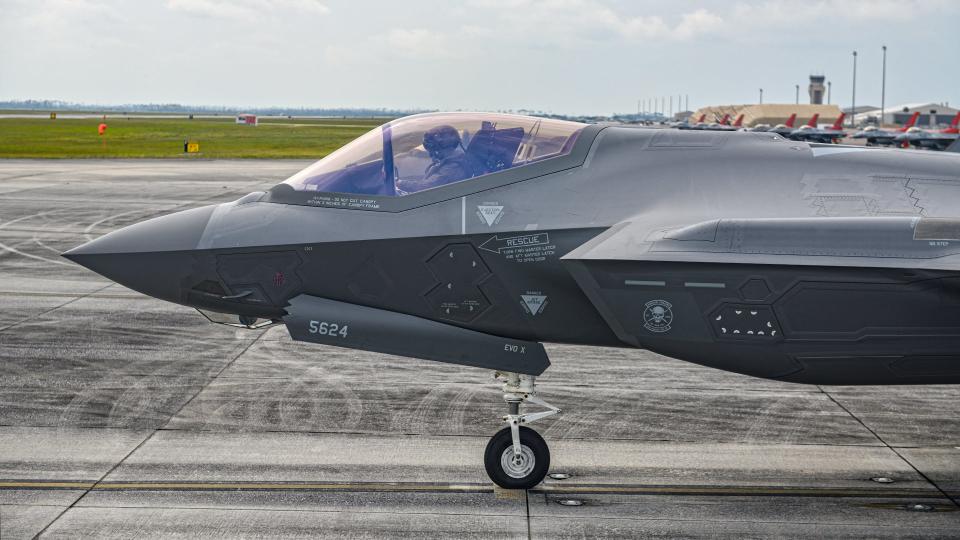
“The other side is that we also evaluate the weapons, how they fare against the targets, the regimes where the missiles are performing better, and also situations where we aren’t recommending the pilots to employ them. That work helps with guidance in the 3-dash-1 shot-kill manual. That’s all of the parameters where aircrews should be employing these weapons that get published out to the squadrons. A report on how all the pilots are doing and how the weapons are performing is also pushed up to the senior leadership to see how everyone is doing before they deploy.”
“I work closely with the Air Combat Command [ACC] schedulers and their deployment spin-up cycle. ACC has units on their schedule that get tasked with a WSEP. So we have a constant schedule. We are building our WSEP schedule for Fiscal Year 2024 right now. If we don’t have many units assigned to a particular WSEP, we start to accept volunteer units if they have the budget and they want to come here to shoot missiles. The WSEPs that coincide with a Checkered Flag, such as the one running right now, are very popular and they get filled almost immediately because we are combining live missile shots and an accompanying large force exercise.”
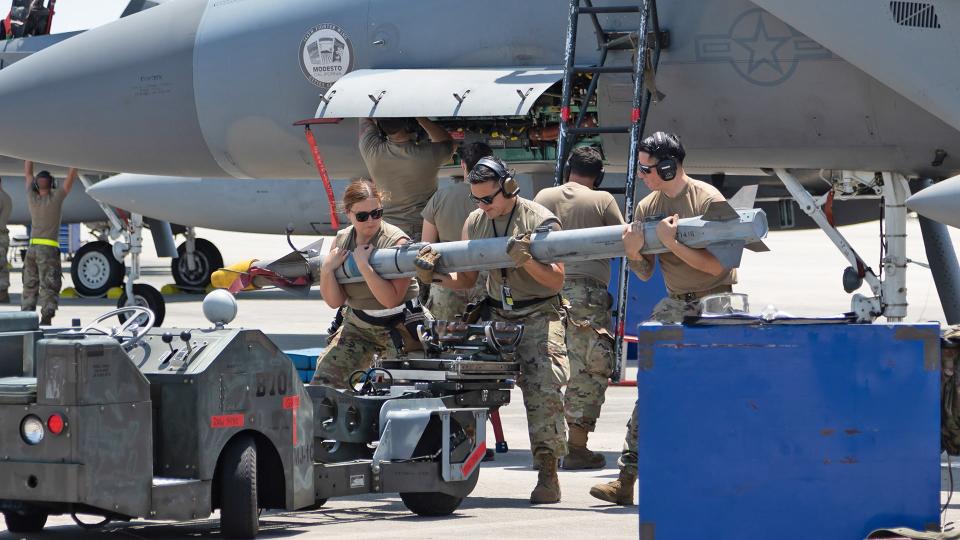
“When it comes to WSEP, it’s a combination of evaluation and a little bit of test work. It may be that the test world would like to shoot 30 missiles to gauge some variables and get after DLOs [desired learning objectives]. A particular test plan may not have covered every little detail before the missile was declared IOC [initial operating capability]. We have a great relationship with a lot of the test agencies, particularly the 28th Test and Evaluation Squadron [TES]. They might want to get additional data points on a specific profile and it may be that this fits with our plans in a WSEP, so we can tweak and modify the plans and maybe even create a new shot profile to get after that objective.”
“We have the benefit of shooting close to 200 missiles a year, so we gather a lot of data points. If there’s something like brand-new software in a weapon and we want to test a new capability, Combat Archer is an easy place to knock that evaluation out. Most of the weapons we shoot at WSEP carry telemetry kits in place of the warhead. Some of the weapons — such as the AIM-9M [“Aim Nine Mike”] Sidewinder — we have collected data on that missile for many years, so we don’t need the telemetry for that and we just put inert warheads in those. The “Nine Mike” shots we do here are more for our first-time shooter experience.”
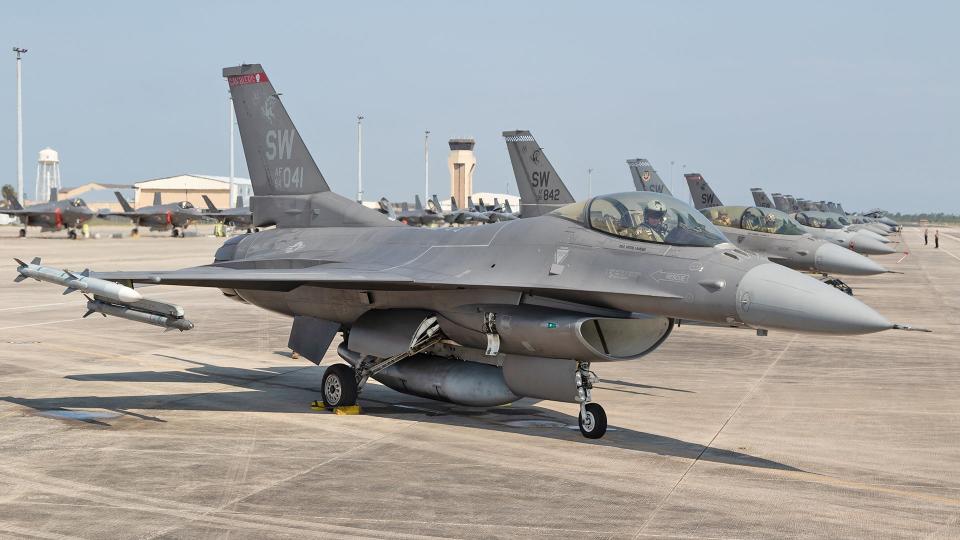
“The missiles themselves are drawn from our munitions facility here at Tyndall. We allocate weapons to the units that are coming for WSEP and throughout the year we aim to divide allocations between the different aircraft types. Our project managers [PMs] create the profiles, which are known as SIPs — special interest profiles. We typically have one or two PMs per aircraft type. They develop the profiles based on new capabilities the weapons or the aircraft themselves might have, such as a new radar or an OFP [operational flight program] software update. We may be looking to either confirm or potentially negate a particular capability to get the truth out there about upgrades."
"The PMs work with the test community, with the Weapons School at Nellis AFB, Nevada, and with the contractor missile analysts to assess exactly what the missile should be able to do and then create profiles for each aircraft type and each missile.”
“Once these are set, they select the most appropriate drone option for the actual shot profiles, that means the jamming kit or flare countermeasures that are most suitable for that profile. They start coordinating with the 82nd Aerial Targets Squadron (ATRS) at least 30 days out from the WSEP to plan the number of drones we need to be prepared and what they are going to be equipped with.”
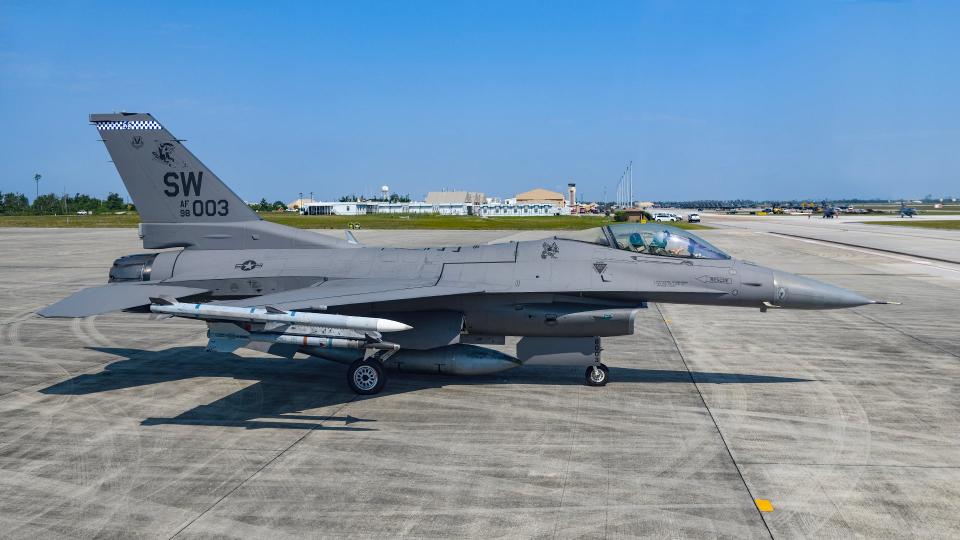
“Allocating drones to shots is a big part of the planning. If we’re shooting an AIM-9 for example, which is a heat-seeking missile, we’re almost definitely going to use a drone carrying flare countermeasures. The infrared plume of the BQM-167 drone matches that of a fighter-size engine — we shoot most of our AIM-9s against those. It’s not going to be a drone carrying a $500,000 jamming pod. The potential of killing that with an AIM-9 would be a waste. We have to be good stewards of not only the drones but also of the specific pods loaded on them and matching them up with what’s required. We avoid shooting AIM-9s against our more expensive electronic-attack-configured drones.”
“We have one NULLO [Not Under Live Local Operator] QF-16 full-scale target allocated to this WSEP to be shot down, and on this occasion, it’s going to be configured with an electronic attack pod. We can configure the QF-16s as an infrared target, but for this WSEP it’s meant for radar-guided AMRAAMs. Typically, anywhere from three to six missiles will be planned to be fired at the full-scale drone, and on this occasion we’re going to try and kill it. We typically shoot down about six QF-16s per year and our bigger WSEPs will have one allocated. But 90-95 percent of the drones we shoot are the BQM-167s.”
“When we fit a telemetry kit in a missile we let the missile go until end-game — meaning it’s going to pass the drone. The only time we actually kill the drone is if the missile physically hits it. A missile shot can still be successful without actually hitting the drone; the telemetry tells us if it gets close enough and if the warhead would have fragged it. This way we can have multiple shooters firing at the drone.”
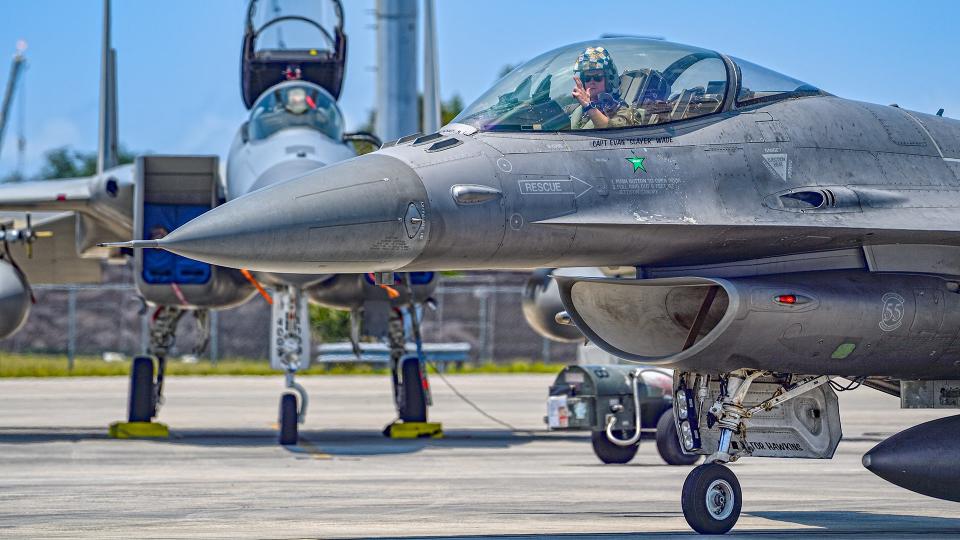
As squadrons prepare to attend WSEP, the unit’s project manager for the exercise, as well as the squadron weapons officer and senior leadership are regularly planning with the PMs at the 83rd FWS.
“The F-35 PM at the 83rd FWS came out to Hill and briefed us on the missile versions that we’d be firing on this WSEP,” explained Capt. Sturniolo. “This included why we’re testing those particular missiles and the exact profiles that we need to fly. We then flew the profiles in the simulator at Hill AFB and trained to fly them so we were well prepared to come here and shoot the missiles real-world.”
“I would say 25 percent of the pilots in this squadron have shot live missiles before, and we prioritize slots for the most experienced pilots who have not shot missiles before. We know that what we are doing here allows the experts to gather valuable data from all of our shots. This is then disseminated throughout the Air Force and it will directly affect our tactics manuals and it could potentially affect how we execute our missions going forward.”
In the next installment from inside WSEP, we look at the missiles themselves, and some of the specific test work that’s been undertaken in recent years.
Editor's note: Our sponsorship partner has no editorial involvement in this article.
Contact the editor: Tyler@thedrive.com

